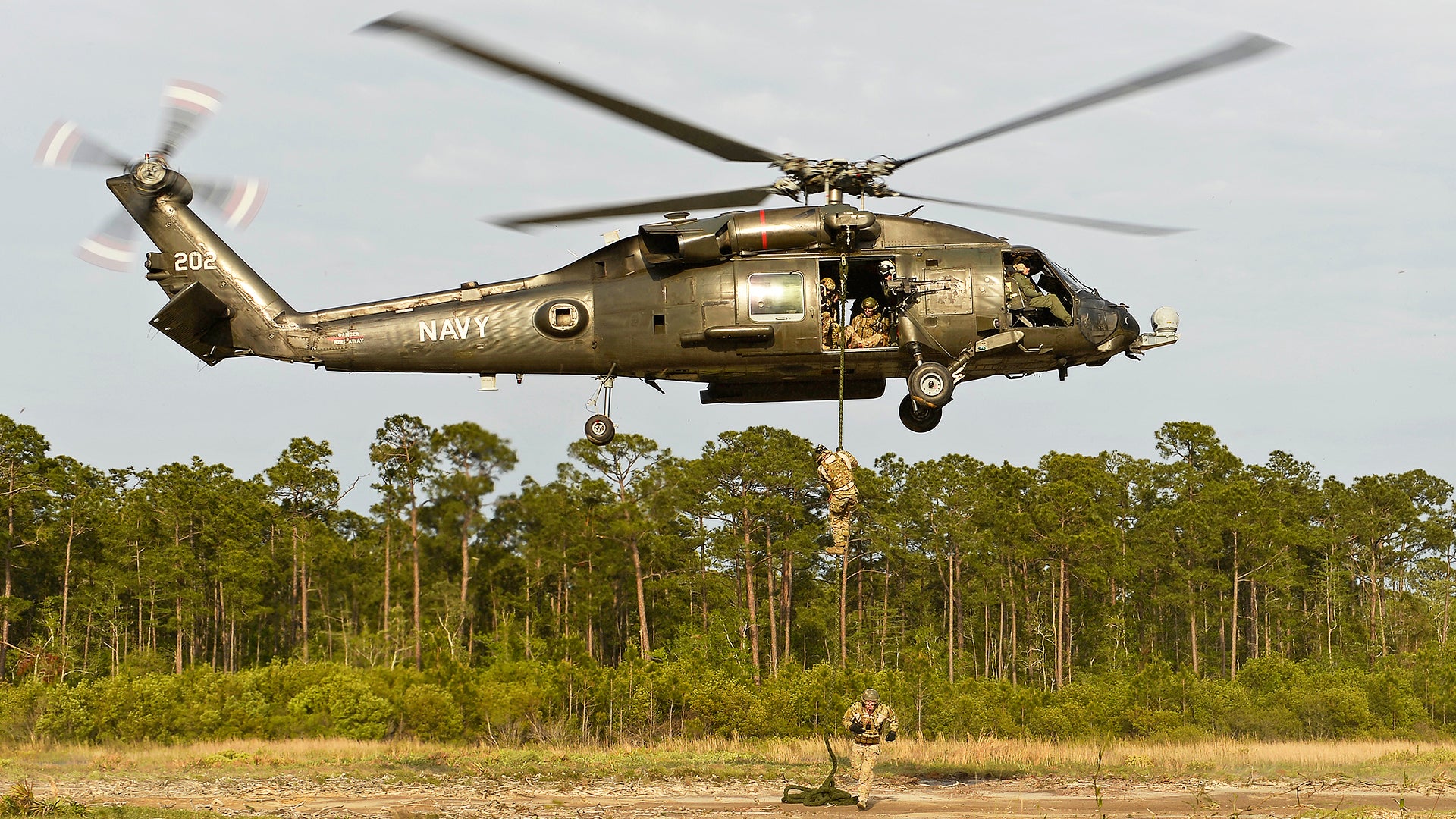In his very first installment as a contributor here at The War Zone, veteran Navy Seahawk pilot Chris “Ox” Harmer tells us why the Navy, which is known for its incredible special operations capabilities, has little dedicated special operations airlift capacity and why Navy SEALs often spend far more time in Army or even Air Force aircraft downrange than they do in Navy ones.
Beyond this, Ox gives us a high-level look at how the Navy ended up with just a single special operations-focused helicopter unit, while the Army and Air Force have far greater capacity in this regard. He also explains how all these forces are structured and how all the different special operations ‘customers’ get serviced by the assets at hand.

Without further delay, here’s Ox:
The Most Famous Special Operations Mission Of Modern Times
It was the most famous special operations mission of modern times. Just over eight years ago, on May 2, 2011, a team of Navy SEALS drawn from the secretive Naval Special Warfare Development Group (NSWDG), better known as DEVGRU or Seal Team Six, assaulted a walled compound in Abbottabad, Pakistan, where they found and killed Osama bin Laden as part of Operation Neptune Spear. The SEALs on the assault team and their backup Quick Response Force (QRF) were flown to and from the raid in two different types of helicopters, MH-47 Chinooks and some highly modified stealth versions of the MH-60 Blackhawk. We know one of the aviation units that flew the helicopters was the U.S. Army’s 160th Special Operations Aviation Regiment (SOAR) and it’s possible that another, more secretive unit, the Flight Concepts Division (FCD) also participated. In their own way, the SOAR and FCD are every bit as selective and uniquely qualified as Seal Team Six.
The mission was a complete success. At the end of the operation, the most wanted terrorist in history was dead, all the friendlies were back in Afghanistan with no casualties, and the U.S. was in possession of a treasure trove of intel taken from Bin Laden’s home. The only loss was one of the stealth Black Hawks, which is a unique story in its own right. But the fact is that the entire operation was done with Army pilots flying Navy SEALS to and from the compound.
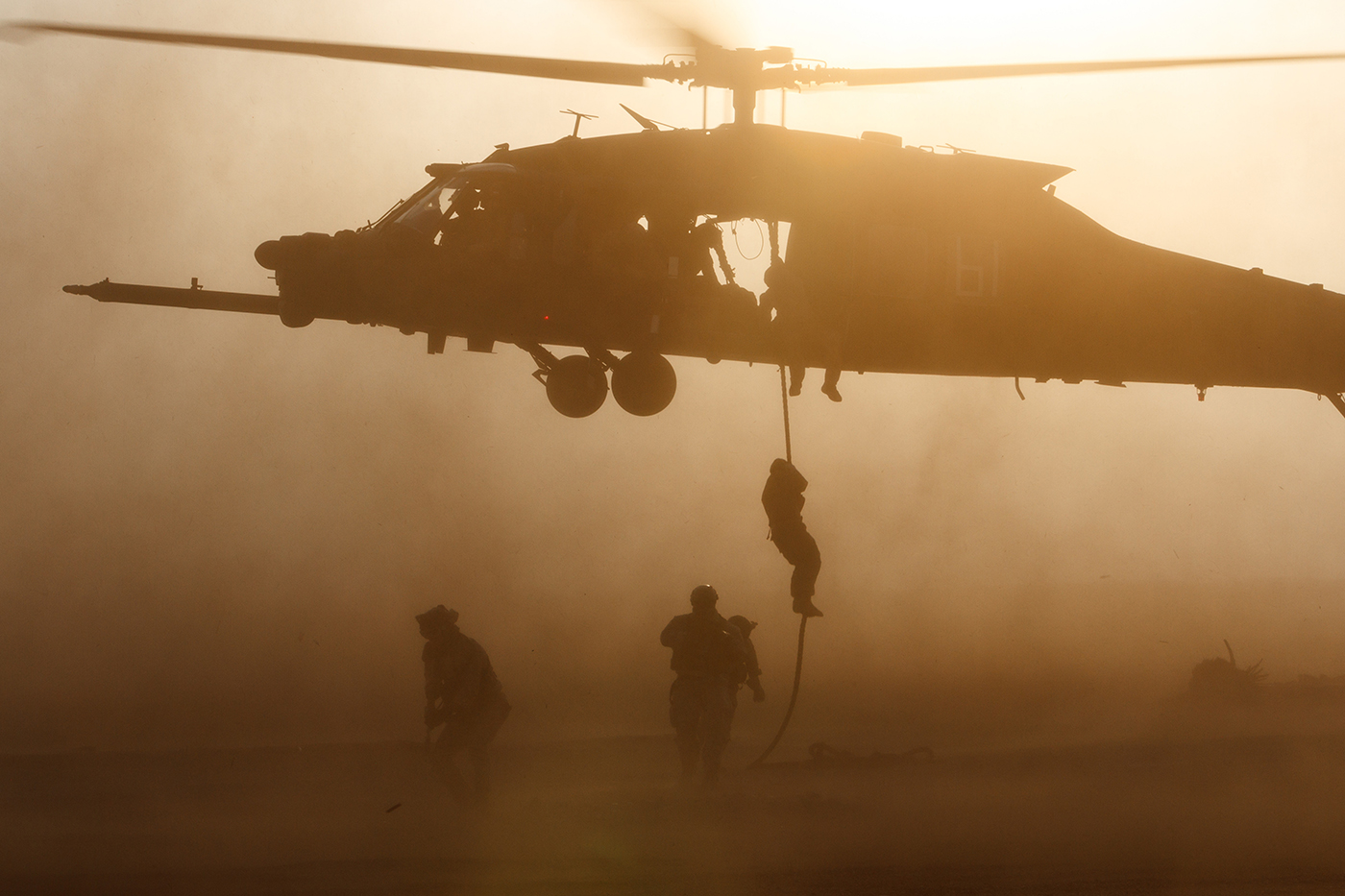
Not Quite Like The Movies
Several years later, my then girlfriend and now wife and I were watching Zero Dark Thirty, the movie adaptation of the raid, and she asked me if I had piloted the type of helicopter the SEALs were flying in. I can’t recall if I was trying to be honest or to just curtail the conversation and get back to the movie, but I answered, “sort of.” Mission fail on both objectives as she then started (okay, restarted) an interrogation about my career as a Naval Aviator, flying the SH-60F and HH-60H models of the Seahawk helicopter, that lasted the rest of our dating life and has shown no sign of abating now that we are married.
The Cliffs Notes version is, yes, I flew a lot of training missions and exercises with SEALs, and even some real-world operations, but I spent the vast majority of my career in the Navy flying other missions. To the extent that I did fly missions with Navy SEALs, Army Rangers, Air Force Pararescuemen (PJs), and Marine Corps Force Reconnaissance (FORECON) personnel, it was as a collateral duty or skill set, not the primary mission focus of any of the squadrons I was attached to.
One part of the movie and my explanation of it that piqued her interest was the fact that the SEALs were transported to and from the raid in Army helicopters. If Navy SEALs were storming the compound to get Bin Laden, why didn’t Navy pilots fly them?
I explained that most Navy helicopter pilots in the Mideast were on ships and that the raid at its closest point to the ocean was well over 700 miles “feet dry,” so the logical solution was to use the Army helicopters and pilots that were already there in Afghanistan or were familiar with the operation and the area it was going to take place. Also, the fact that secret stealth Blackhawks were available was clearly also a unique factor. Beyond all that, I pointed out that this particular Army helicopter unit, the 160th SOAR, had a single mission focus in life, flying special operations missions, and they were extremely good at it. They also had the best equipment for the job.
Had the 160th not been available, an equally capable unit, the Air Force’s 20th Special Operations Squadron, flying the CV-22 Osprey tiltrotor aircraft, would probably have been the next logical choice, assuming the mission was willing to accept the risk of a less stealthy airframe than the highly modified stealth Blackhawks that were used. This sparked her next question—if the Army and Air Force have dedicated aviation units to support their Special Operations Forces (SOF), why doesn’t the Navy? And what about the Marine Corps?
The answer to that question is complicated.
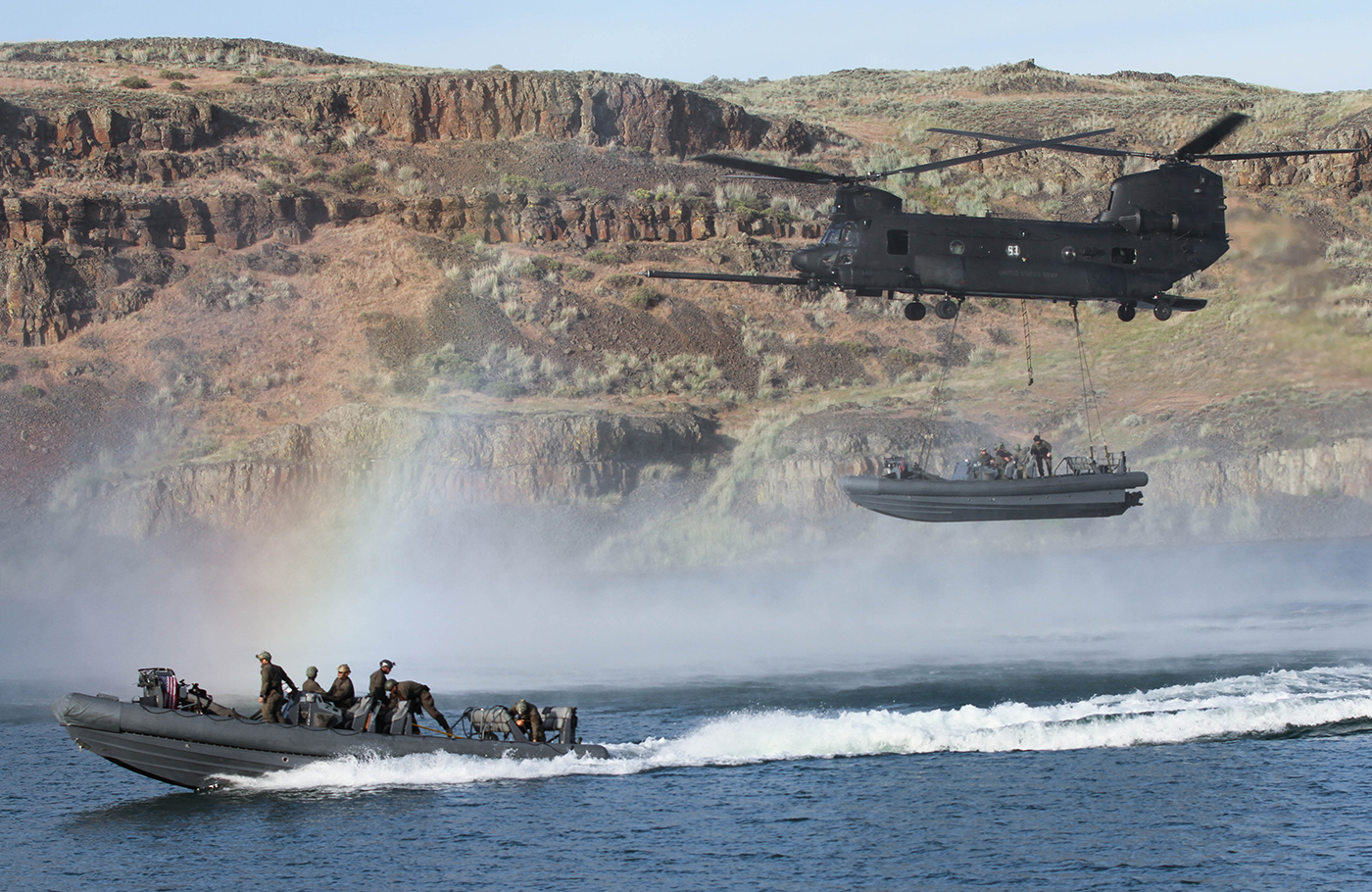
A Massive Special Operations Force Structure
The U.S. military has a massive special operations force structure, led by a dedicated Unified Combatant Command, United States Special Operations Command (USSOCOM or SOCOM). Each of the four military services is represented in SOCOM with a component command, including the United States Army Special Operations Command (USASOC), United States Naval Special Warfare Command (NSWC), Air Force Special Operations Command (AFSOC), and Marine Corps Forces Special Operations Command (MARSOC).
[Editor’s note: SOCOM also contains the secretive joint service Joint Special Operations Command (JSOC), which includes the Aviation Tactics Evaluation Group (AVTEG). AVTEG is understood to exercise command and control over a number of top-secret special operations aviation units, such as FCD, and otherwise coordinate aviation support for JSOC. You can read more about AVTEG and its associated units here.]
USASOC and AFSOC are both large component commands; USASOC has an authorized end strength of over 30,000 uniformed personnel and AFSOC has an authorized end strength of over 15,000 uniformed personnel. In contrast, NSWC has an authorized end strength of less than 10,000 uniformed personnel, and MARSOC less than 5,000 uniformed personnel. Along with being responsible for all U.S. military special operations, SOCOM also coordinates with non-military federal agencies, such as the Central Intelligence Agency’s (CIA) Special Activities Center (SAC).
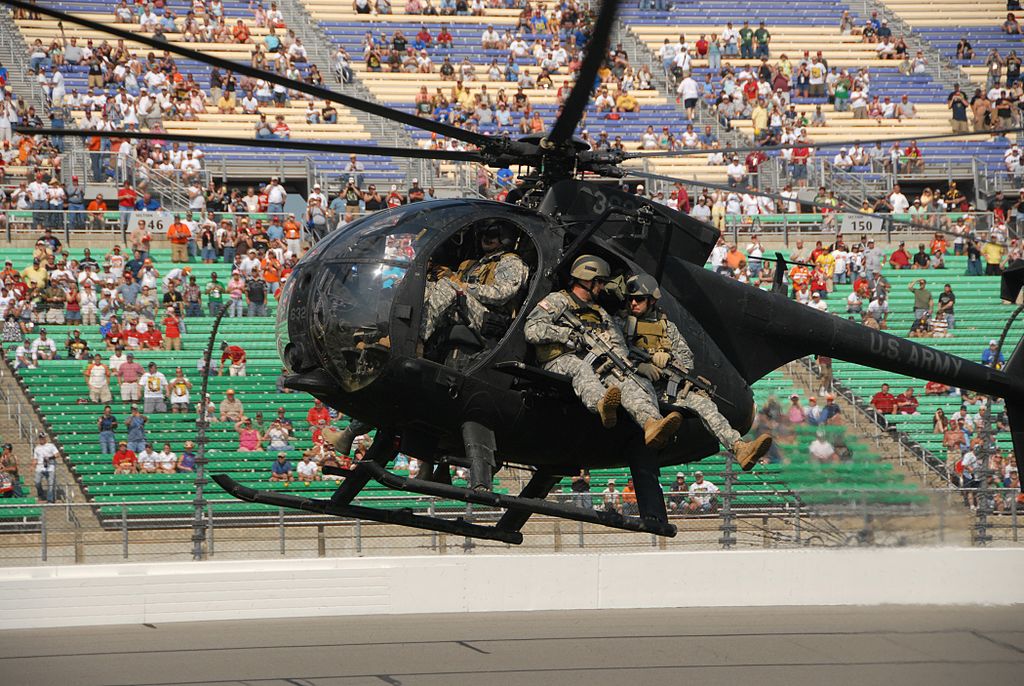
Dedicated SOF Aviation Support: Army And Air Force Have It, Navy & Marines, Not So Much
A big part of the massive U.S. special operations footprint is dedicated aviation support for special operations forces (SOF). The component commands handle this responsibility very differently, at least partially due to their differing sizes. In the case of USASOC and AFSOC, those component commands, in turn, have subordinate elements whose only, or at least primary, responsibility is providing aviation support to SOF, and are directly responsible to SOCOM to do that. Without listing all of those subordinate elements, AFSOC has a number of squadrons that provide fixed wing, tiltrotor, and Unmanned Aircraft Systems (UAS) support to SOF. The Army’s contribution in this regard is the 160th SOAR.
While both AFSOC and SOAR occasionally support missions that are not SOF centric, they do so only on a “not to interfere” basis with their core mission, which is to be trained and ready to support the full spectrum of SOF aviation support missions.
The fact is, while Navy SEALs train on a regular basis with Navy helicopter squadrons and occasionally with fixed-wing Navy cargo squadrons flying the C-130 Hercules and C-2 Greyhounds, they currently wind up flying a majority of their actual combat missions on Army helicopters or Air Force fixed wing support platforms like the MC-130H Combat Talon II, MC-130J Commando II, and the CV-22 Osprey tiltrotor.
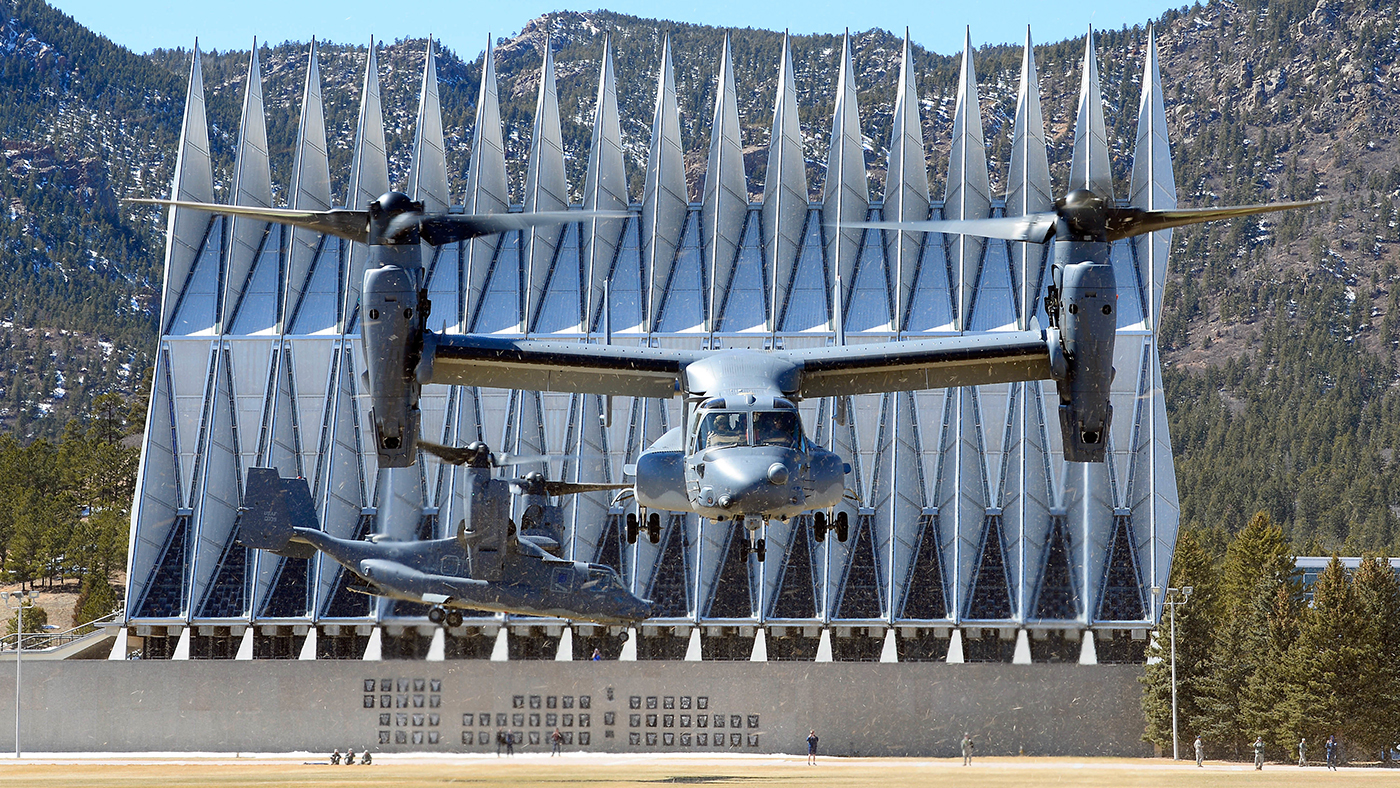
Navy And Marine Corps Provide Aviation Support To SOF “Out Of Hide”
Compared to USASOC and AFSOC, NSWC and MARSOC are much smaller, and neither NSWC nor MARSOC have any dedicated aviation support for SOF in their component command structure. This isn’t to say the Navy doesn’t provide aviation operations support to the SEALs. It does, just in a very different manner than the Army and Air Force. At least partially because NSWC and MARSOC are so much smaller than USASOC and AFSOC, the Navy and Marine Corps simply can’t afford or justify dedicated aviation support units in their SOCOM component commands. As a result, the majority of training and exercise support the Navy provides to NSWC comes from active duty Navy helicopter squadrons that support NSW/SOF “out of hide,” as a collateral duty, in addition to their other missions. The same norm applies for Marine helicopter support to MARSOC units.
While active duty Navy helicopter squadrons train to NSW/SOF support as a “primary mission,” it is one of several primary missions, along with maritime Search and Rescue (SAR), Combat Search and Rescue (CSAR), Anti Surface Warfare (ASUW), Anti-Submarine Warfare (ASW), and logistics. As a practical matter, this means that active duty Navy helicopter squadrons are significantly less proficient in the SOF support mission than SOAR or AFSOC.
During pre-deployment training and exercises, Navy helicopter squadrons provide the majority of training services to the SEALS, but with so many SEAL deployments being land-based since 9/11, when it comes to actual combat operations, AFSOC and SOAR wind up providing most of that support. That is a result of both proximity—AFSOC and SOAR are present in the land-centric SOF missions SEALS are being used for—as well as proficiency. AFSOC and SOAR are simply more proficient at high-intensity SOF support missions than Navy helicopter squadrons.
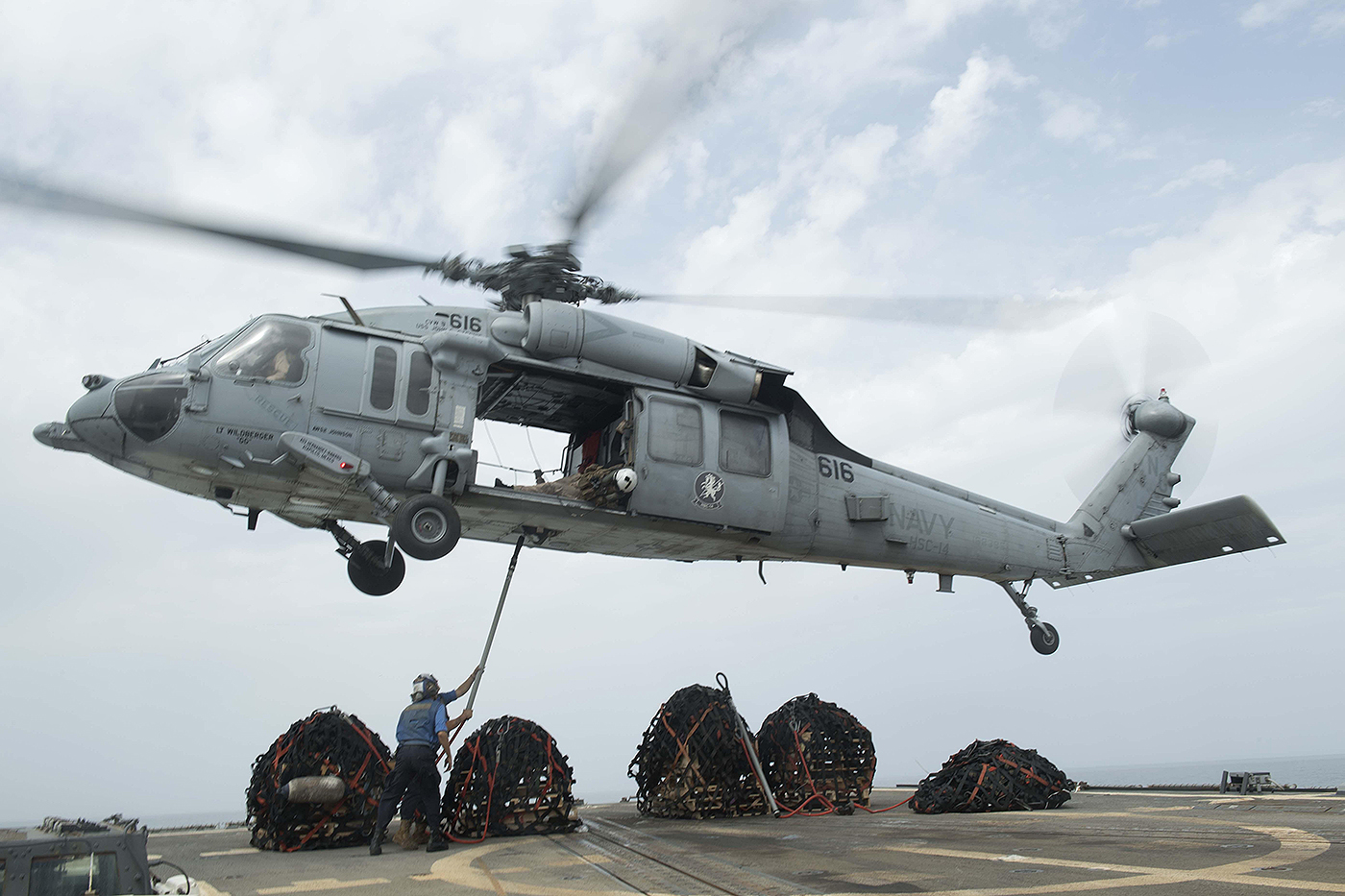
Navy Dedicated Support Is a Single Reserve Squadron, Marines Have Nothing
The Navy does maintain a single reserve aviation squadron dedicated specifically to SOF support. The “Firehawks” of Helicopter Sea Combat Squadron 85 (HSC-85) stationed at Naval Air Station North Island, California, are tasked with providing training and exercise support to NSWC, just down the beachline at Naval Amphibious Base Coronado.
HSC-85 has an excellent reputation, but is limited in what it can do at least partially because that squadron does not belong to NSWC. On the Navy’s organization chart, it belongs to the Navy’s Helicopter Sea Combat Wing, Pacific. As a practical matter, that distinction means that in terms of Naval Aviation’s budget requests, funding for SOF aviation support is at or near the bottom of the priorities list. This is in contrast to USASOC and AFSOC, which provide dedicated funding and equipment support for their SOF-centric aviation commands. This, in turn, means the Navy’s aviation equipment in the SOF support mission is not as advanced as that used by SOAR and AFSCOC.
This difference in equipment manifests itself most obviously in two areas—in-flight refueling and Aircraft Survivability Equipment (ASE). HSC-85 is equipped with the MH-60S Seahawk. It is an adequate platform for SOF support, but is limited compared to the equipment used by SOAR and AFSCOC.
For example, the MH-60S is not capable of inflight refueling. For maritime centric NSW/SOF operations where the “mother ship” hosting the MH-60S can move within a relatively close distance of the target, the limited range of the MH-60S is not an issue. For longer-range SOF support missions, the fact that SOAR MH-47 Chinooks, MH-60 Blackhawks, and AFSOC CV-22 Ospreys are capable of in-flight refueling gives those platforms a much bigger radius of action.
In terms of ASE, Navy helicopters are equipped with the standard suite of chaff and flare dispensers, Infra-Red Guided Missile Countermeasures (IRCM), Radar Warning Receivers (RWR), but when upgrades become available, they are typically last in line to get the new or upgraded equipment.
The Marine Corps has no aviation squadrons assigned exclusively to MARSOC, neither active duty or reserves. This is partially because the Marine Corps, like the Navy, simply can’t afford or justify dedicated aviation SOF units given the small overall size of MARSOC, but there is another reason for this. The Marine Corps has always seen its Force Reconnaissance (FORECON) units as integral to the mission of the Marine Corps and skeptical of placing them under joint command and losing control of them.
Indeed, MARSOC did not stand up and join SOCOM until 2006, at which point the Marine FORECON community was split into two groups, with FORECON units remaining integral to the Marine Corps and the newly formed Raider Regiment and subordinate commands joining SOCOM.
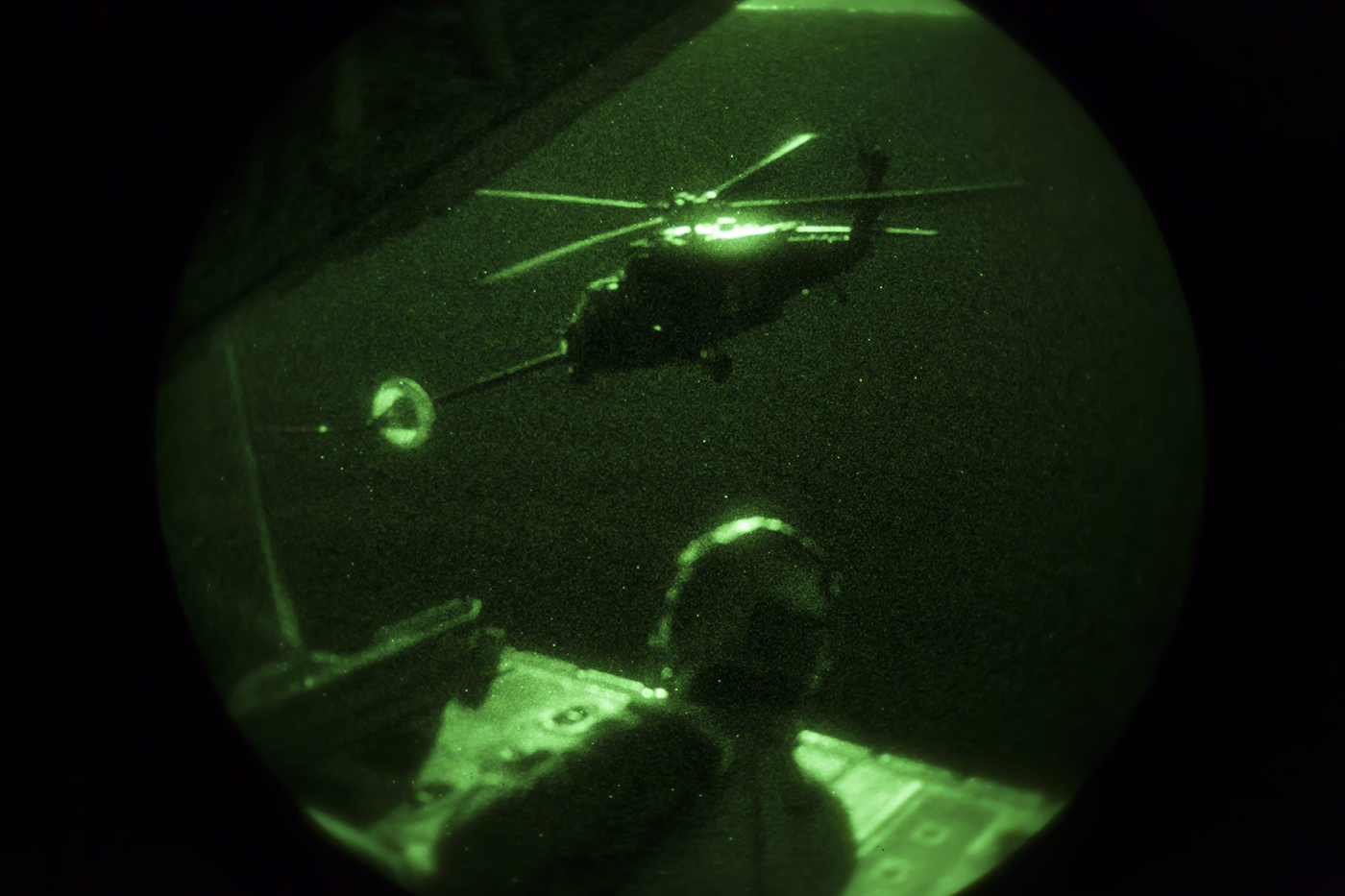
For Navy, It’s All About The Force Structure
The vast majority of Navy helicopter squadrons are organized into one of two “type wings”—Helicopter Sea Combat (HSC) Wing and Helicopter Maritime Strike (HSM) Wing—with each Wing having a Pacific Fleet and Atlantic Fleet component headquarters.
HSC squadrons fly the MH-60S version of the Seahawk and HSM squadrons fly the MH-60R version of the Seahawk. Both of these versions of the Seahawk are incredibly effective in their primary roles, but unlike several airframes operated by the Army and Air Force, neither version of the Seahawk was intended exclusively for NSW/SOF support.
The MH-60R is equipped with a surface search radar, Forward Looking Infrared (FLIR), sonobuoy launcher, dipping sonar, and all the equipment necessary to process and relay all the data generated by those advanced onboard and offboard sensors. In terms of armament, it can carry a mix of lightweight torpedoes, Hellfire missiles, 2.75-inch rockets, and one crew-served machine gun.
As far as its overwater capabilities go, the MH-60R is the most advanced rotary wing platform in the world. If you are looking to search, detect, track, and kill enemy surface ships or submarines, the MH-60R is an extremely capable Anti-Surface Warfare (ASuW) and Anti-Submarine Warfare (ASW) platform. While these capabilities are impressive and necessary for the Navy, they leave the MH-60R extremely limited on space and typically with a pretty narrow margin for additional weight.
If MH-60R squadrons are tasked with supporting NSW/SOF missions, they are limited to a relatively small personnel footprint in the cabin, perhaps a couple of command and communication personnel or a sniper/spotter team. The most obvious use for the MH-60R in NSW/SOF support is as an airborne command platform, reconnaissance asset, sniper perch, or weapons delivery platform. Both it and its predecessor, the SH-60B, have seen extensive use in these roles.
The MH-60S is designed primarily to support logistics, carrying internal and external loads from shore-to-ship and ship-to-ship, allowing sustained maritime operations at sea without warships needing to return to port. The MH-60S is also the Navy’s primary platform for overwater search and rescue and medical evacuations, as well as overland Combat Search and Rescue (CSAR).
Lacking all the sonar and surveillance equipment that the MH-60R has, the MH-60S has much more internal room and carrying capacity, and has two stations for door gunners, allowing crewmen to operate machine guns simultaneously with personnel getting into/out of the aircraft. Like the MH-60R, the MH-60S can carry Hellfire, 2.75-inch rockets, and crew-served machine guns, both 7.62mm and .50 caliber. The primary use of an MH-60S in NSW/SOF support is as a flying truck, taking SEALS into and out of battle and as a sniper and weapons delivery platform. Both it and its predecessor, the HH-60H, have extensive use in these roles.
While both of these platforms are capable of NSW/SOF support, they were built primarily for other missions. More importantly, while their active duty crews are trained to do NSW/SOF support, that is only one of several Primary Mission Areas (PRIMARS) that they train to regularly.
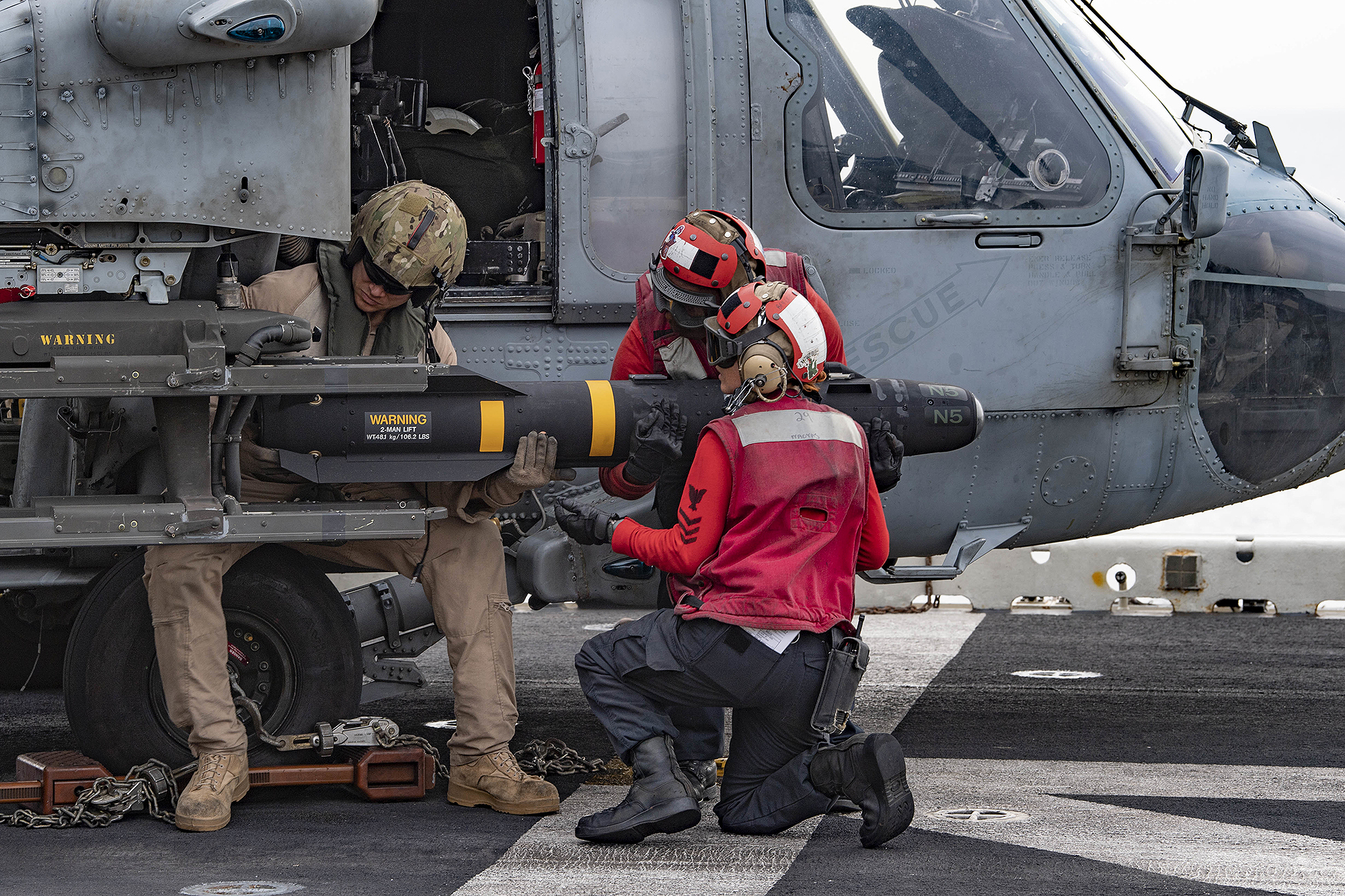
At Sea, Navy Supports, But Overland, Army And Air Force Take the Lead
So why doesn’t the Navy maintain more than just a single reserve squadron to support NSW/SOF operations? It certainly is not because there is no need for it. Navy SEALs are in constant need of aviation platforms to support their training requirements, not to mention their real-world operations. Aside from the budget constraints, the next most obvious answer is the Navy treats aviation support for NSW/SOF as two separate issues.
The first is the core maritime special operations mission that Naval Aviation can support “out of hide” with existing squadrons. In this role, Navy helicopter squadrons play a primary, almost exclusive role in maritime-centric special operations missions, which center around various iterations of the Maritime Interdiction Operation (MIO) mission and the Visit Board Search Seizure (VBSS) mission. While the frequency of these missions varies with external factors, for all practical purposes the Navy has been conducting MIO and VBSS missions more or less continuously since 2001 in the Persian Gulf, the Gulf of Oman, the Somali Basin, the Red Sea, and the Southwest Pacific. For these missions, the existing sea-based Navy helicopter squadrons do most of the support of NSW/SOF operations.
The second are the deep overland missions that are currently taking place in Afghanistan and to a lesser extent Syria. For these persistent, overland special operations-centric campaigns, Navy SEALs are supporting a land-centric fight, so they wind up using land-centric aviation infrastructure from AFSOC and USASOAC. For all practical purposes, Naval Aviation provides no support to these campaigns at all.
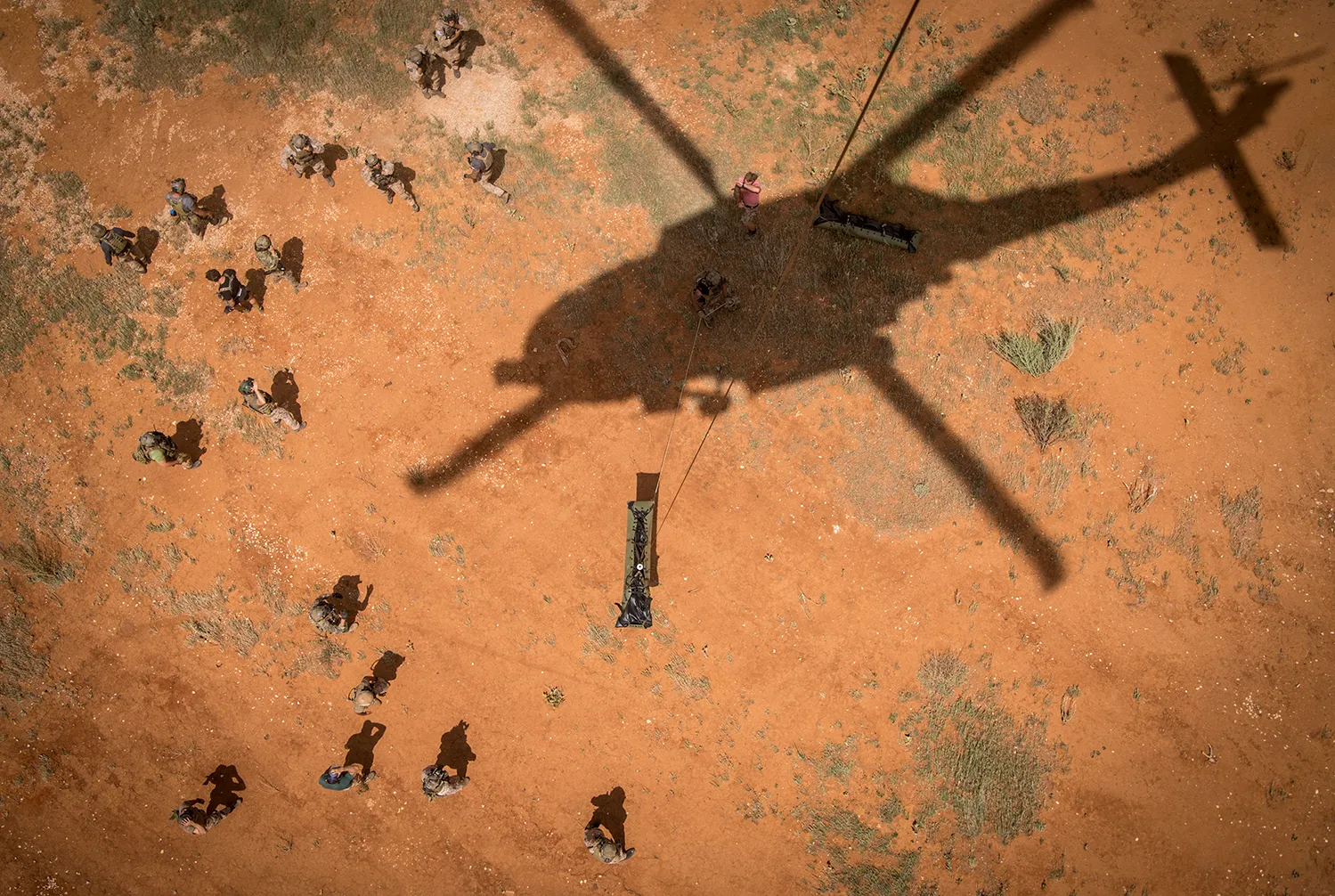
Dedicated Navy Helicopter Support During Operation Iraqi Freedom
Naval Aviation force structure is simply not set up to provide dedicated, ongoing aviation support to SOF. However, during Operation Iraqi Freedom (OIF), when it became apparent that the SEAL mission in Iraq was going to be long term and continuous, thus requiring ongoing dedicated support, the Navy used two of its reserve helicopter squadrons to set up a single detachment in Iraq that essentially served continuously for the duration of active U.S. combat operations from 2003 to 2011.
At the beginning of Operation Iraqi Freedom, the two Navy reserve helicopter squadrons that were dedicated solely to SOF support were the HCS-4 Red Wolves, stationed at Naval Air Station Norfolk, Virginia, and the HCS-5 Firehawks, stationed at Naval Air Station North Island, California. As part of the Navy’s restructuring effort of its helicopter force, these squadrons were eventually redesignated HSC-84 and HSC-85. Both of these squadrons were descendants of Helicopter Attack Light (HAL) Three, the Navy’s active duty helicopter squadron that supported SOF operations during the Vietnam War.
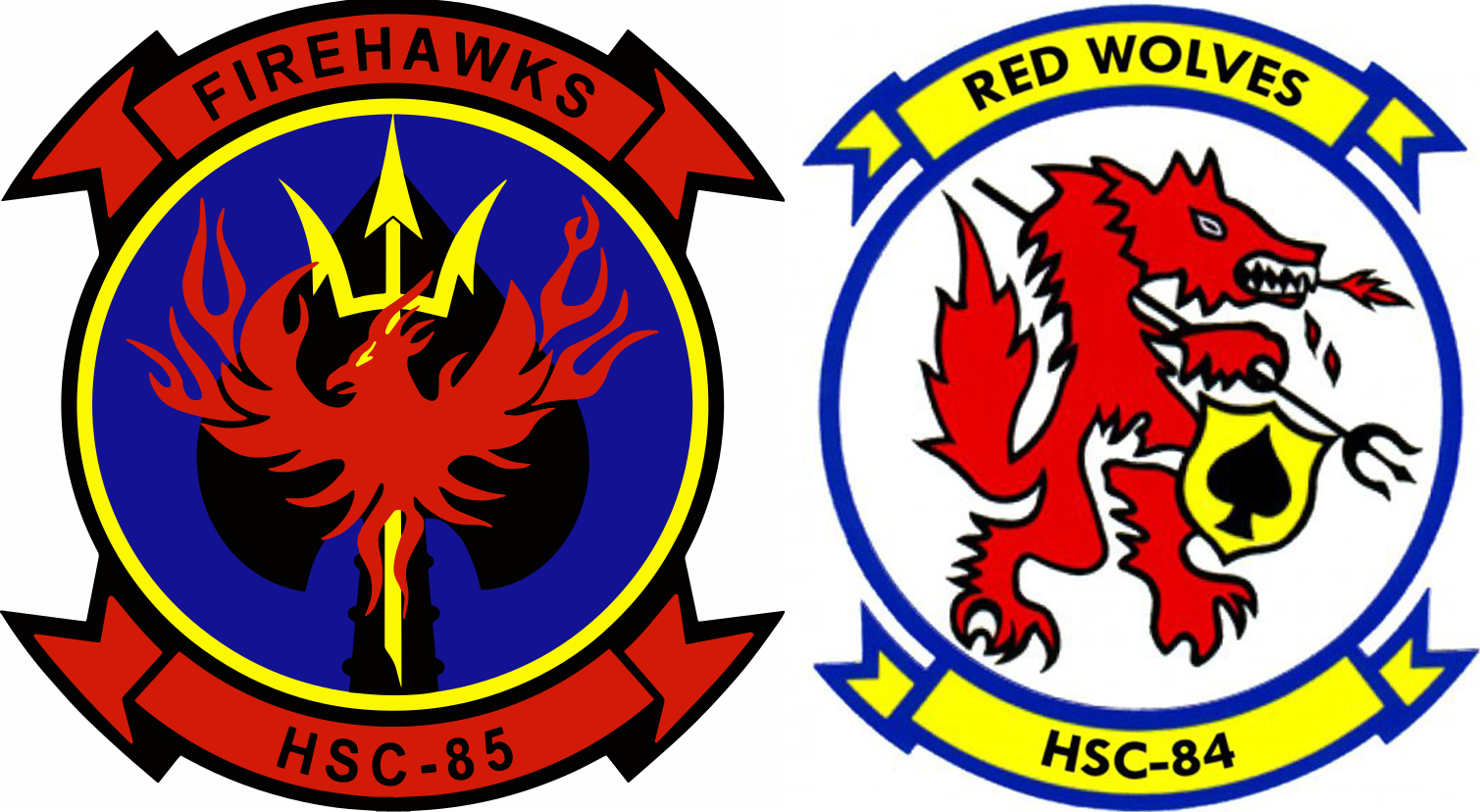
Both these squadrons supplied airframes, aviators, and maintainers to sustain a nearly continuous presence in Iraq for just under nine years. They were stationed at various times in Kuwait, Baghdad, and Balad. Although much of the detachment’s operational history in Iraq remains classified, we do know they flew a total of approximately 13,800 flight hours, completing 2,300 missions supporting special operations, with approximately 1,200 missions consisting of Direct Action (DA) operations targeting enemy combatants. Those DA missions resulted in hundreds of high-value targets captured or killed.
By all accounts, the detachment performed exceptionally well.
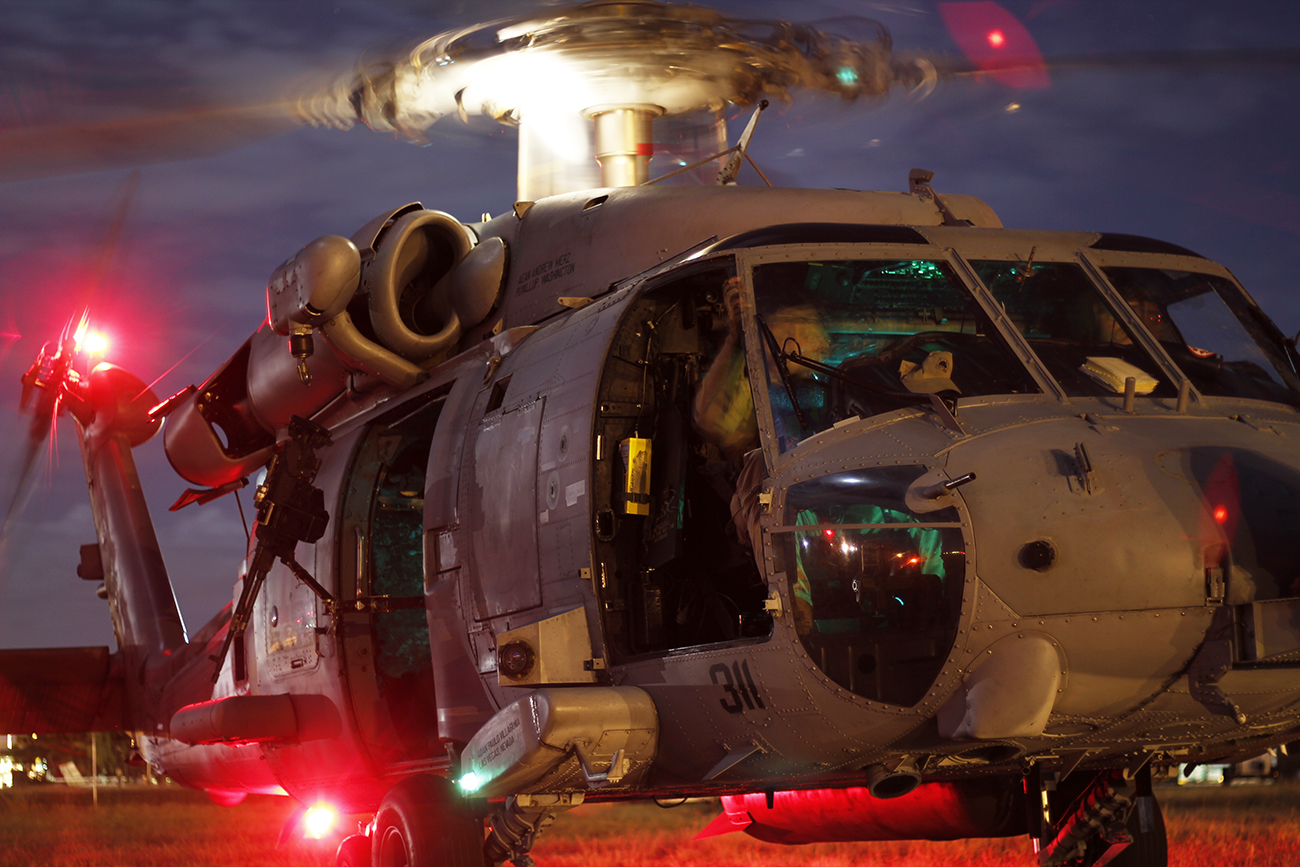
The Budget Axe Falls – Big Navy Disestablishes HSC-84
While working in the J5 (Strategic Plans and Policy) directorate of the Joint Staff in the Pentagon, one of my superiors commented that “The budget is the policy.” That’s a pithy way of saying if you want to know what an organization really values, look what it spends money on.
By 2013, Big Navy was in a serious budget crunch and started looking at disestablishing both HSC-84 and HSC-85. The view from the Chief of Naval Operations (CNO) staff was simple. The USS Gerald R. Ford (CVN-78), the lead ship in the new class of supercarriers designed to replace the Nimitz class was way over budget and behind schedule. The F-35 was also way over budget and behind timeline. There were a number of other pressing budget issues—the Littoral Combat Ship and Zumwalt class destroyers programs were well behind their timelines to meet performance parameters. Ultimately, Big Navy decided to shut down both squadrons.
To be clear, this was never anything but a budget decision. NSWC made the case, repeatedly, that dedicated helicopter support was essential to their pre-deployment training and exercise program. They could survive on deployment with flight support from SOAR and AFSOC. Getting through workups prior to deployment was going to be nigh on impossible without these dedicated squadrons.
Ostensibly, Big Navy offered to keep both squadrons if SOCOM paid part of the bill. That offer and or agreement, depending on whose version of the story you believe, was never formalized. Ultimately, after a heavy lobbying campaign, Big Navy reluctantly agreed to keep HSC-85.
HSC-84 was disestablished in 2016.
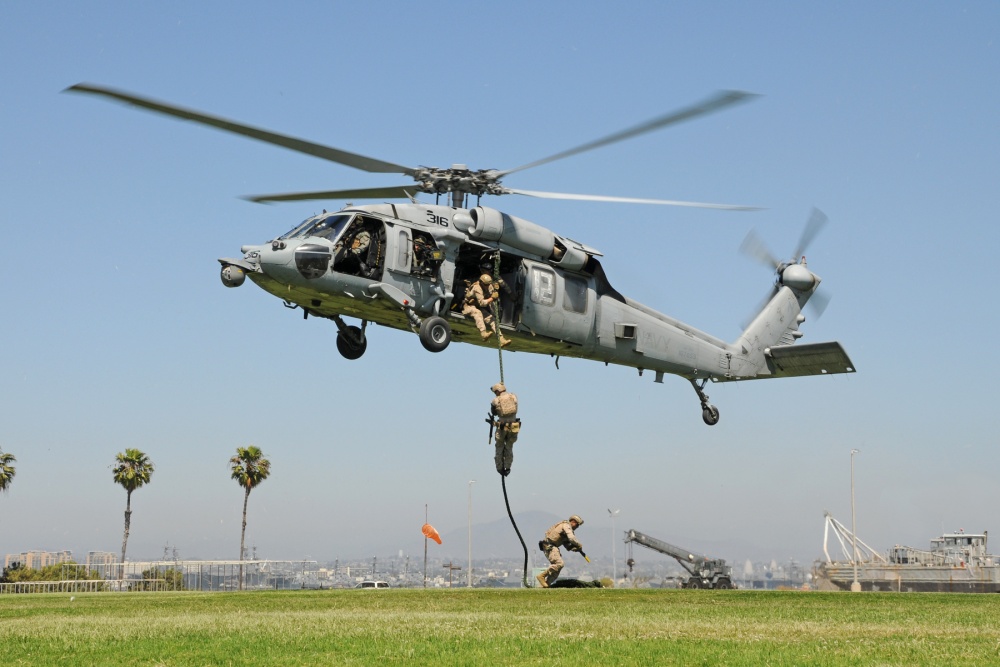
The Future of Naval Aviation Support For SOF
Navy active duty helicopter squadrons currently provide support for NSW/SOF in training and exercise situations, and to a limited extent and for a limited mission set, they also perform actual missions.
With that said, those active duty Navy helicopter squadrons have a multitude of other missions competing for their focus and flight hours. Additionally, flying NSW/SOF missions requires a significant amount of focus and training time in order to gain the required expertise.
For the foreseeable future, the demand signal to have at least one Navy helicopter squadron dedicated solely to NSW/SOF support will be significant. Whether or not Big Navy will continue funding it is an open question—that Big Navy should fund it seems beyond dispute at this point.
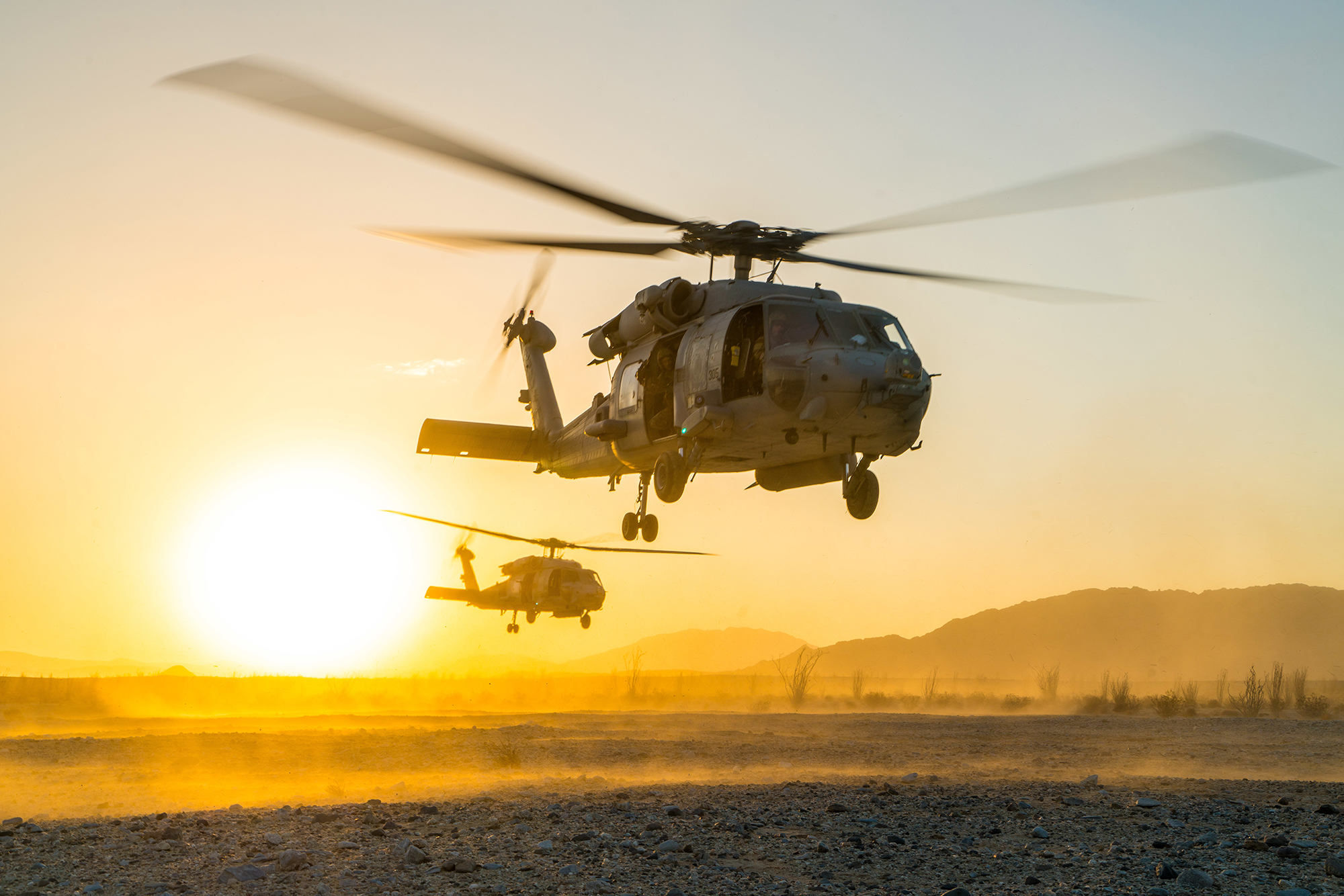
Contact the editor: Tyler@thedrive.com
